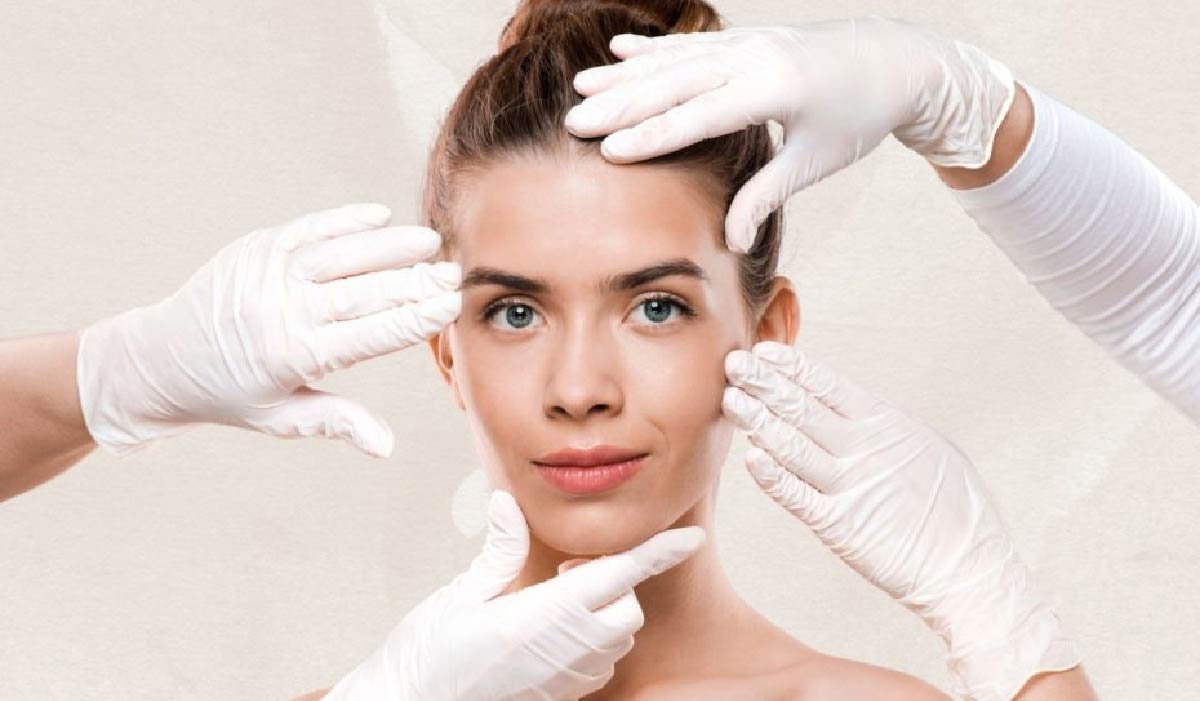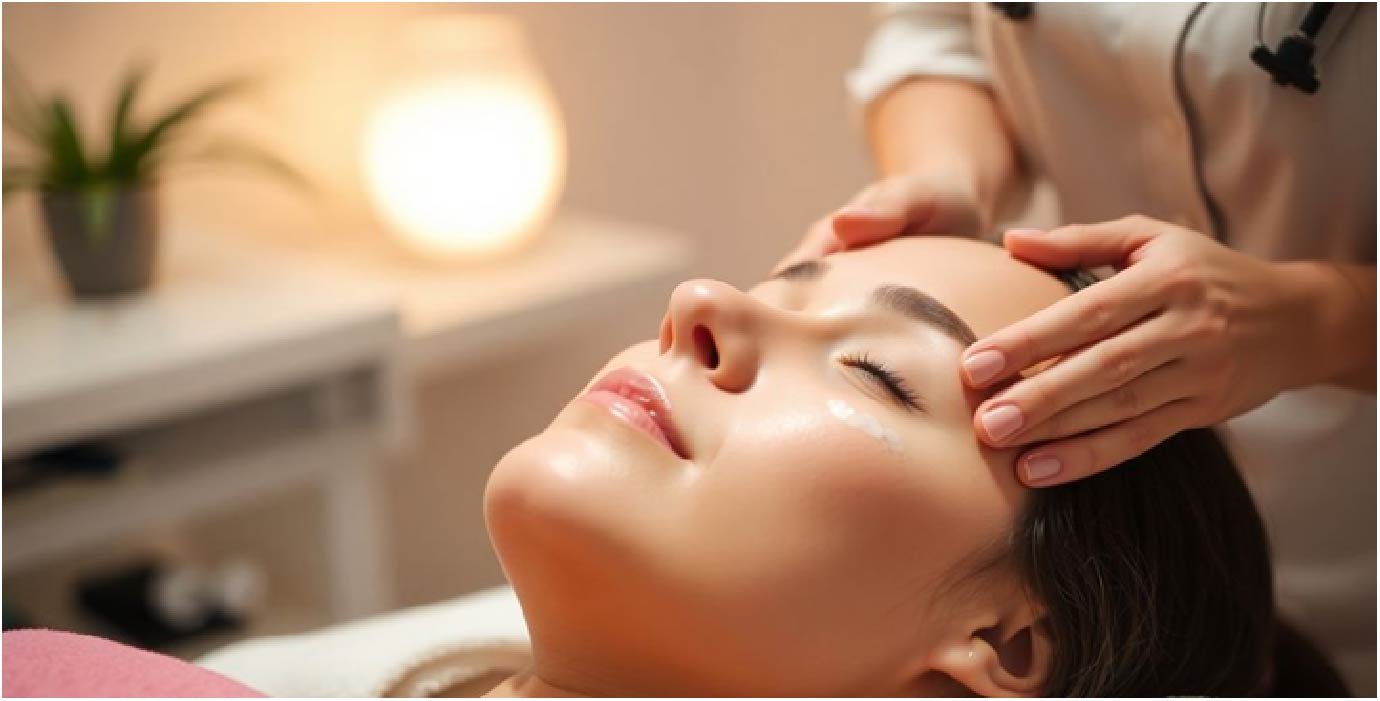Health
What to Expect During Your First Visit to a Professional Aesthetic Clinic

Your first visit to a professional aesthetic clinic is all about getting to know each other and understanding your unique needs. Think of this initial consultation as the foundation for any future treatments. It’s a chance for the clinic’s professionals to learn about you and for you to learn about them and what they can do. The goal is to create a clear path forward that aligns with your aesthetic aspirations.
Completing Necessary Paperwork
Upon arrival, you’ll likely be asked to fill out some forms. This isn’t just busywork; it’s a vital step. These documents typically cover your medical history, any current medications, allergies, and past cosmetic procedures. Be thorough and honest. This information helps the clinic ensure your safety and tailor treatments effectively. It also gives them insight into your overall health, which can influence how your skin responds to various treatments. Providing accurate details here is key to a successful consultation.
Discussing Your Aesthetic Goals
This is your time to shine and talk about what you hope to achieve. Whether you’re looking to address fine lines, improve skin texture, or explore more significant changes, clearly communicate your desires. Be specific about what you like and dislike about your current appearance. It’s also helpful to mention any lifestyle factors that might impact treatment, like sun exposure or stress levels. Sharing your aesthetic goals openly helps the practitioner understand your vision.
Reviewing Your Medical and Lifestyle History
Beyond the forms, your practitioner will likely discuss your medical and lifestyle history in more detail. They might ask about your daily skincare routine, diet, exercise habits, and even sleep patterns. All these elements play a role in skin health and treatment outcomes. For instance, knowing about your sun exposure habits can inform recommendations for sun protection and treatments for sun damage. Similarly, understanding your stress levels can help in developing a holistic approach to your skin’s well-being. This part of the consultation is about building a complete picture to ensure the best possible results.
The Importance of Choosing the Right Clinic

Picking the right clinic is a big deal when you’re thinking about aesthetic treatments. It’s not just about getting a procedure done; it’s about your safety, comfort, and getting the results you want. A good clinic makes all the difference in your experience.
Your first step should always be thorough research. Don’t just go with the first place you find. Think about what you’re looking for and what makes a clinic stand out. It’s about finding a place that feels trustworthy and professional.
Assessing Clinic Hygiene and Professionalism
When you walk into an aesthetic clinic, the first thing you should notice is how clean it is. A spotless environment is a clear sign that the clinic takes hygiene seriously. This includes everything from the treatment rooms to the waiting area and the equipment they use. A professional clinic will also have clear protocols for sterilization and infection control.
It’s also important to observe the staff. Do they seem knowledgeable and attentive? Are they wearing appropriate attire?
Visiting an Award-Winning Aesthetic Clinic in London ensures you receive care from highly trained professionals in a facility that meets the highest standards of cleanliness and patient safety.
A professional demeanor and a well-maintained facility go hand in hand. Don’t hesitate to ask about their cleaning procedures.
Evaluating the Range of Available Treatments
A clinic that offers a variety of treatments is often a good sign. It means they can cater to different needs and concerns. You might go in thinking you need one thing, but after a consultation, you might find that a different treatment is actually better suited for your goals. A clinic with a broad selection can provide more options.
Consider if they use modern technology and techniques. The field of aesthetics is always evolving, so a clinic that stays current is more likely to provide effective and up-to-date treatments. This variety also means they can tailor a plan specifically for you.
Verifying Practitioner Expertise and Credentials
This is perhaps the most critical aspect. You want to be sure that the people performing your treatments are qualified and experienced. Look for clinics that employ licensed medical professionals, such as doctors, nurses, or certified aestheticians. Their credentials should be readily available.
Ask about their training and experience, especially with the specific treatments you are interested in. Reading reviews and testimonials from other patients can also give you insight into the practitioners’ skills and the overall quality of care. Trustworthy practitioners are transparent about their qualifications.
Preparing for Your First Appointment
Getting ready for your initial visit to an aesthetic clinic is straightforward, but a little preparation goes a long way. It helps ensure the clinic staff can accurately assess your skin and that you feel comfortable and informed throughout the process. Following these guidelines will help make your first appointment as smooth and productive as possible.
Understanding Pre-Treatment Guidelines
Before your appointment, you’ll likely receive specific instructions. These often include avoiding certain activities or products that could affect your skin’s condition or the treatment’s effectiveness. Paying close attention to these pre-treatment guidelines is vital for accurate assessment and optimal results. For instance, you might be advised to avoid sun exposure or certain skincare ingredients.
Avoiding Certain Medications and Substances
It’s important to inform your practitioner about all medications and supplements you’re taking. Some, like blood thinners or certain supplements, can increase the risk of bruising. You may be asked to temporarily stop taking these before your appointment. Avoiding alcohol in the 48 hours prior is also a common recommendation, as it can also contribute to bruising and affect how your skin responds.
Preparing Your Skin for Assessment
When you arrive for your appointment, your skin should be clean and free of makeup. This allows the aesthetician or doctor to get a clear, unobstructed view of your skin’s natural state. Avoid using active skincare products like retinoids or exfoliating acids for a few days beforehand. This helps ensure your skin is in a neutral state, making any assessment more accurate. Preparing your skin this way is a key step in the overall process.
What to Expect During Your Skin Analysis
Utilizing Advanced Skin Scanning Technology
Many clinics now use special equipment for a thorough skin analysis. Think of it like a high-tech magnifying glass for your face. This technology can look deeper than what the naked eye sees, checking for things like sun damage, dehydration, and even early signs of aging. It’s pretty neat how it can pinpoint specific areas that need attention. This detailed look helps the professionals understand your skin’s current condition really well.
Identifying Underlying Skin Concerns
Beyond the surface, this analysis aims to uncover hidden issues. It might reveal problems like clogged pores, uneven skin tone, or areas of inflammation that aren’t immediately obvious. By spotting these underlying skin concerns early, the clinic can create a more effective plan. This process is key to understanding what’s really going on with your skin, not just what you can see in the mirror. It’s all about getting to the root of any skin problems.
Establishing a Baseline for Progress Tracking
This initial skin analysis serves as a starting point. It creates a clear picture of your skin’s condition before any treatments begin. This baseline is super important for tracking how your skin improves over time. You’ll be able to see the actual changes and results from the treatments you receive. It helps both you and the clinic see the progress being made and adjust the plan if needed. This makes the whole process more transparent and goal-oriented.
Developing Your Personalized Treatment Plan
Tailoring Treatments to Your Unique Needs
After a thorough skin analysis and discussion of your aesthetic goals, the next step is creating a treatment plan made just for you. This isn’t a one-size-fits-all approach. Your practitioner will consider your skin’s specific condition, your desired outcomes, and your lifestyle to suggest the most effective treatments. They’ll explain why certain procedures are recommended and how they address your particular concerns. This personalized approach is key to achieving natural-looking results that align with your vision.
Discussing Expected Outcomes and Potential Risks
It’s important to have a clear understanding of what you can expect from any treatment. Your practitioner will discuss the likely results, including how long it might take to see them and if multiple sessions are needed. They will also go over any potential risks or side effects associated with the procedures. Open communication about expectations and potential outcomes is vital for a positive experience. This discussion helps manage expectations and ensures you feel confident and informed about the path forward.
Understanding Treatment Costs and Downtime
Financial planning and time commitment are significant factors in any aesthetic journey. Your provider will break down the costs associated with your personalized treatment plan, including any package deals or financing options available. They will also explain the expected downtime for each procedure, if any. Knowing this information beforehand allows you to schedule treatments appropriately and prepare for any recovery period. A clear understanding of both costs and downtime is essential for making informed decisions about your aesthetic care.
Considering Treatment on the Day of Your Visit
Options for Immediate Gentle Procedures
Sometimes, after the initial consultation and skin analysis, a clinic might suggest proceeding with a gentle treatment right away. This is often the case for procedures that require minimal preparation and have very low risk. Think of things like a basic facial, a hydrating mask, or perhaps a mild LED light therapy session. These types of treatments are usually well-tolerated and can offer immediate, subtle improvements, making the most of your visit. It’s a way to get a feel for professional treatments without a significant commitment.
When Further Preparation or Consultation is Needed
However, it’s not always go-time on the first visit. More involved treatments, like injectables (Botox or fillers) or certain laser therapies, often need more careful planning. Your practitioner might want you to have a bit of time to think things over, or there might be specific pre-treatment instructions you need to follow for a few days. This ensures safety and the best possible results. Sometimes, a follow-up consultation is necessary to fine-tune the plan before any actual treatment begins.
The Role of Patch Testing for Sensitivity
For some treatments, especially those involving new products or potentially sensitizing ingredients, a patch test might be recommended. This involves applying a small amount of the product to a discreet area of your skin, usually behind the ear or on the inner arm. It’s done to check for any adverse reactions or allergic responses before applying it to a larger, more visible area. This step is a good indicator of how your skin might react and is a responsible part of the process, especially when considering treatment on the day of your visit.
Post-Treatment Care and Follow-Up

After your initial appointment, the clinic’s commitment to your well-being continues. Proper post-treatment care is vital for achieving the best results and ensuring a smooth recovery. Your practitioner will provide detailed instructions tailored to the specific procedures you underwent. It’s important to follow these guidelines closely, as they are designed to help your skin heal effectively and minimize any potential complications. This might involve using specific creams, avoiding certain skincare products, or limiting sun exposure for a period.
Receiving Detailed Aftercare Instructions
Before you leave the clinic, you’ll be given clear, written instructions on how to care for your skin. These instructions are not one-size-fits-all; they are specific to the treatments you received. For instance, after a laser treatment, you might be told to avoid sun exposure and use a gentle cleanser. If you had a chemical peel, the aftercare might focus on hydration and avoiding exfoliation. Don’t hesitate to ask questions if anything is unclear. Understanding your aftercare plan is a key part of the post-treatment care process.
Scheduling Follow-Up Appointments for Monitoring
Many aesthetic treatments require follow-up appointments to monitor your progress and assess the results. These check-ins allow your practitioner to make any necessary adjustments to your treatment plan or address any concerns you might have. For example, if you’re undergoing a series of treatments for acne scarring, a follow-up appointment is crucial to see how your skin is responding and to plan the next session. This ongoing monitoring helps ensure you’re on the right track to achieving your aesthetic goals.
Maintaining Results and Avoiding Complications
Your journey doesn’t end with the initial treatment. Maintaining the results you’ve achieved is an ongoing process. This often involves a consistent at-home skincare routine, potentially incorporating products recommended by your clinic. Your practitioner will guide you on how to best maintain your results long-term and what to do to avoid complications. This might include scheduling periodic maintenance treatments or adjusting your skincare routine as your skin changes. Consistent adherence to post-treatment care is paramount for lasting success.
Your First Visit: A Summary
So, that’s pretty much the rundown of what to expect when you head to an aesthetic clinic for the first time. It’s really about getting to know your skin and your goals with a professional who can guide you. They’ll ask about your health, what you’re hoping to achieve, and maybe even use some tech to get a good look at your skin. Then, they’ll suggest a plan just for you. Sometimes you might even start a treatment that day, but often it’s about planning for the future. Don’t forget to ask all your questions – they want you to feel comfortable and informed. Aftercare is important too, so pay attention to those instructions. It’s all part of the process to help you reach your aesthetic goals safely and effectively.
-

 Celebrity1 year ago
Celebrity1 year agoWho Is Jennifer Rauchet?: All You Need To Know About Pete Hegseth’s Wife
-

 Celebrity1 year ago
Celebrity1 year agoWho Is Mindy Jennings?: All You Need To Know About Ken Jennings Wife
-

 Celebrity1 year ago
Celebrity1 year agoWho Is Enrica Cenzatti?: The Untold Story of Andrea Bocelli’s Ex-Wife
-

 Celebrity1 year ago
Celebrity1 year agoWho Is Klarissa Munz: The Untold Story of Freddie Highmore’s Wife
















